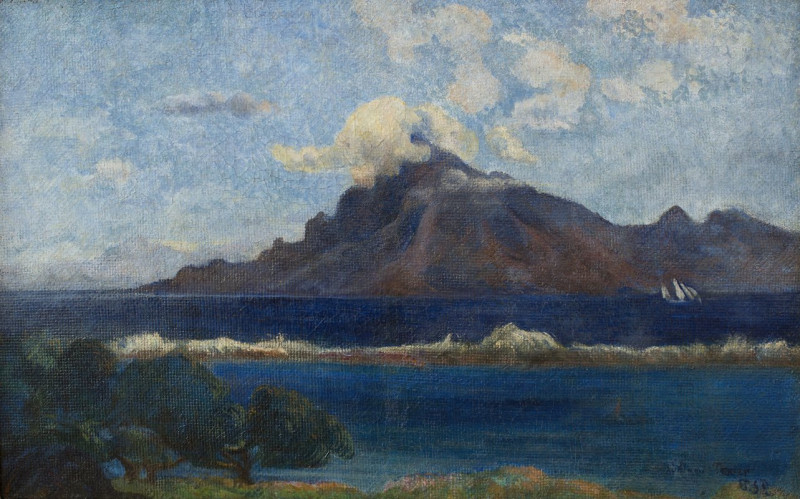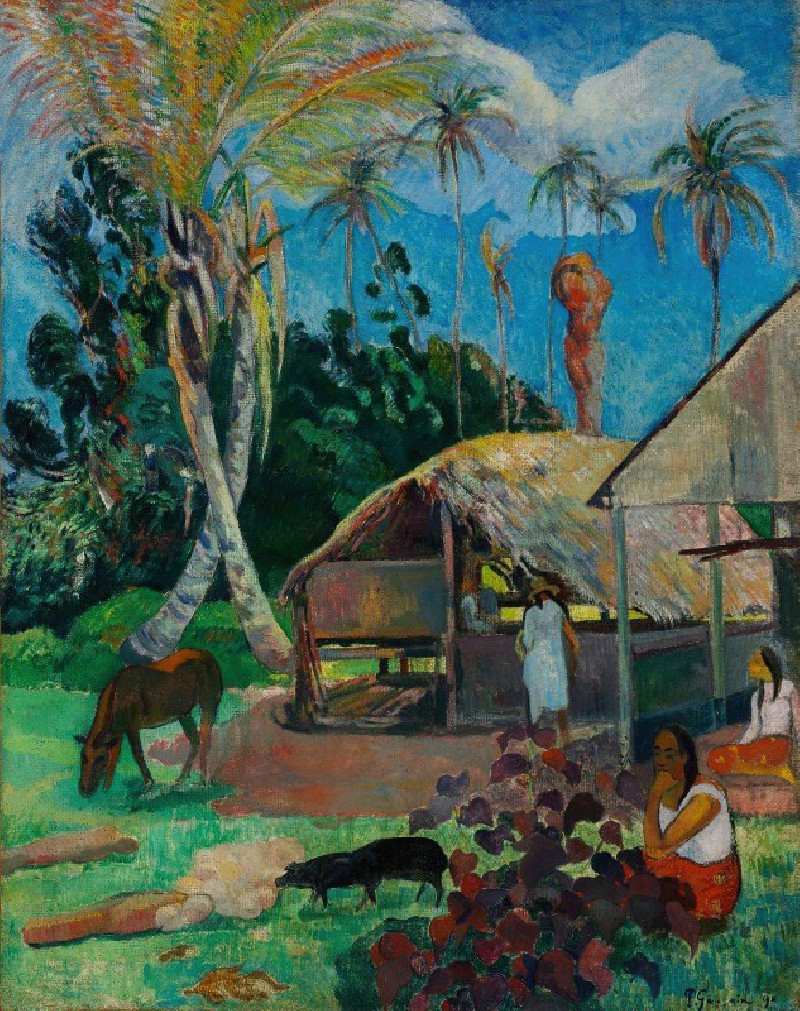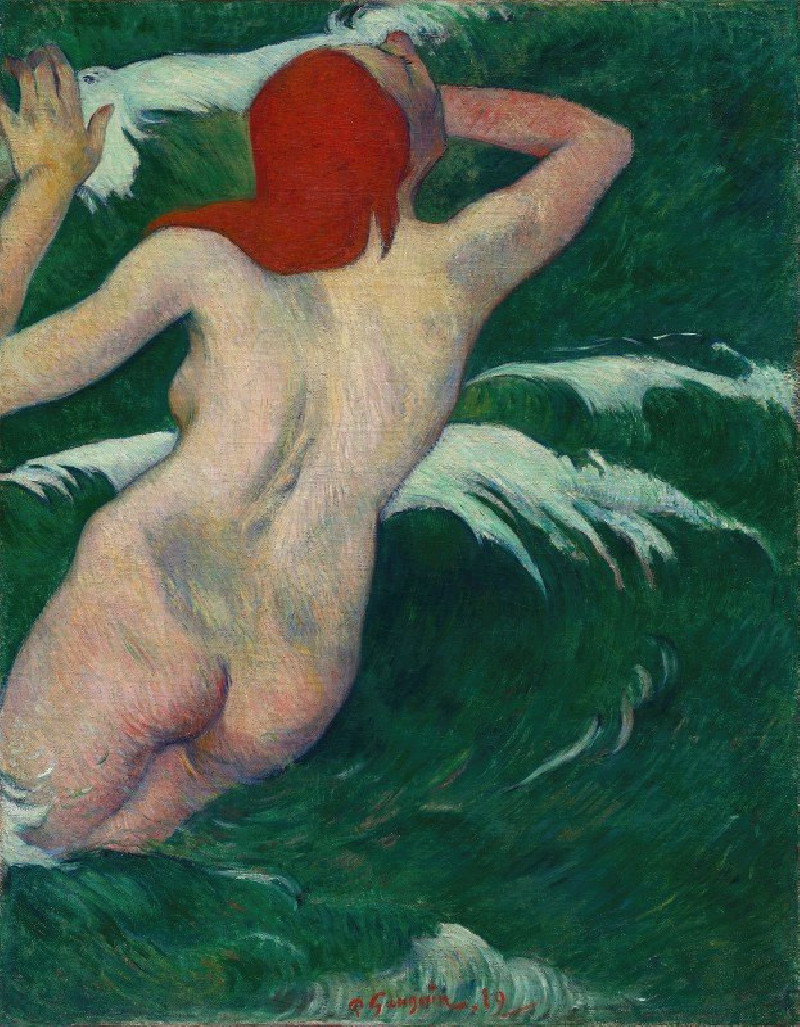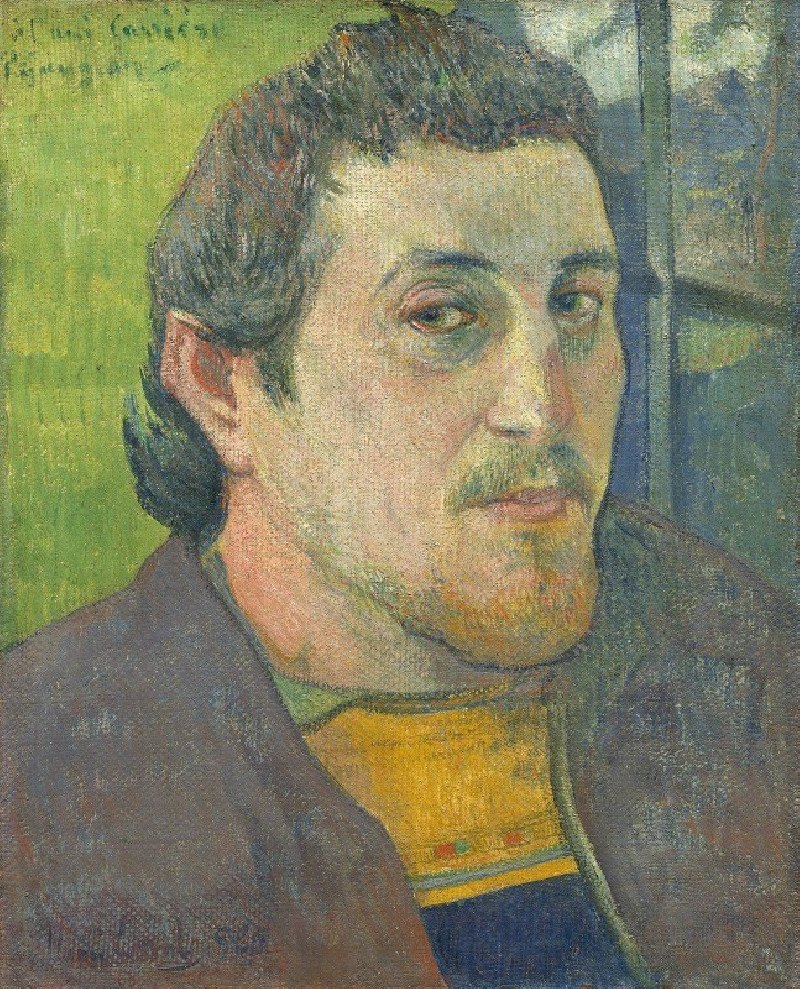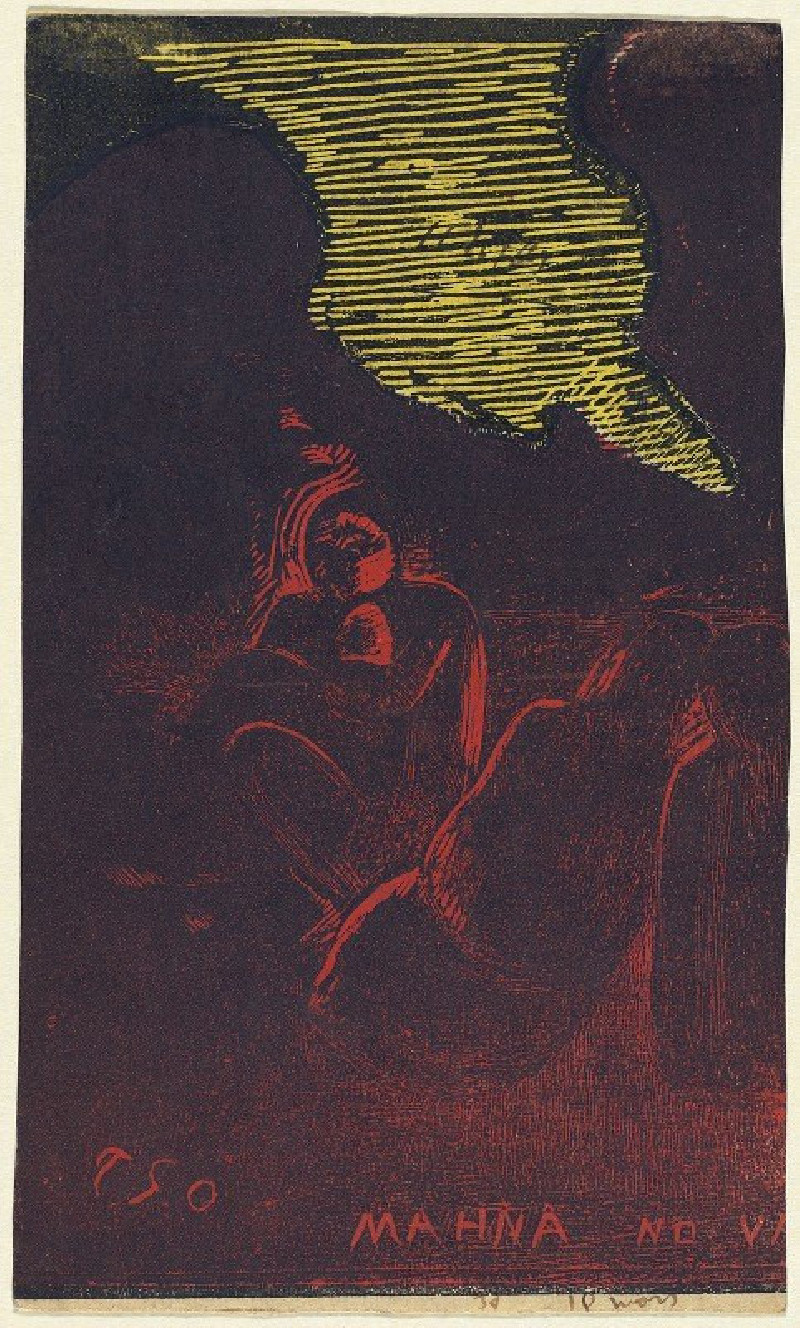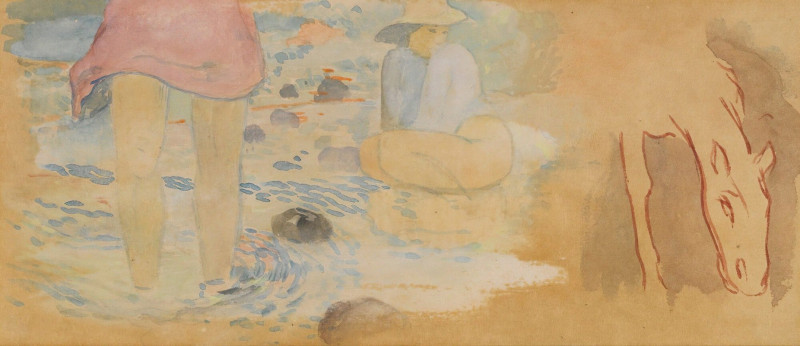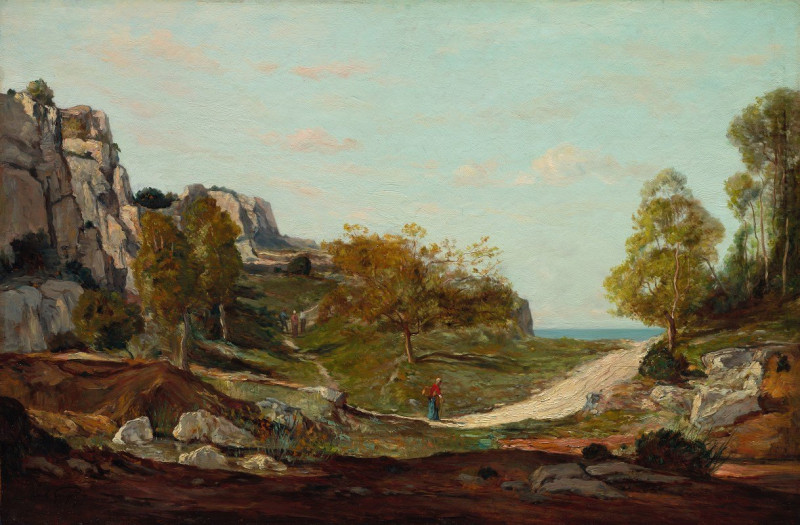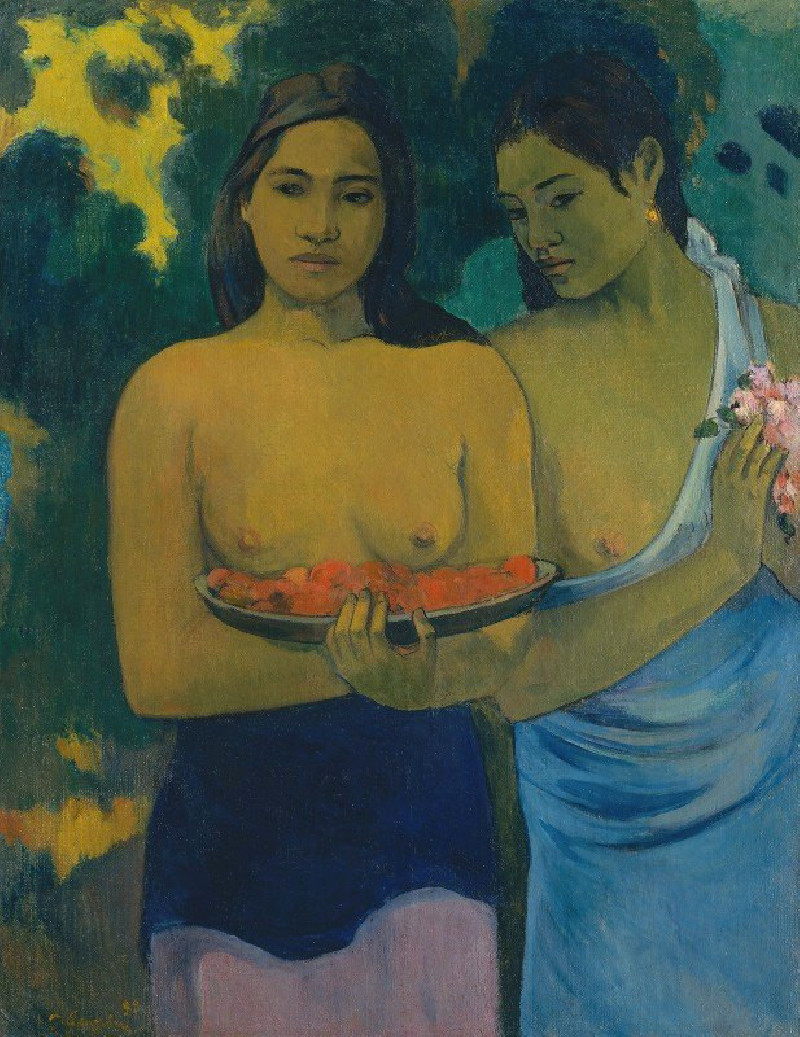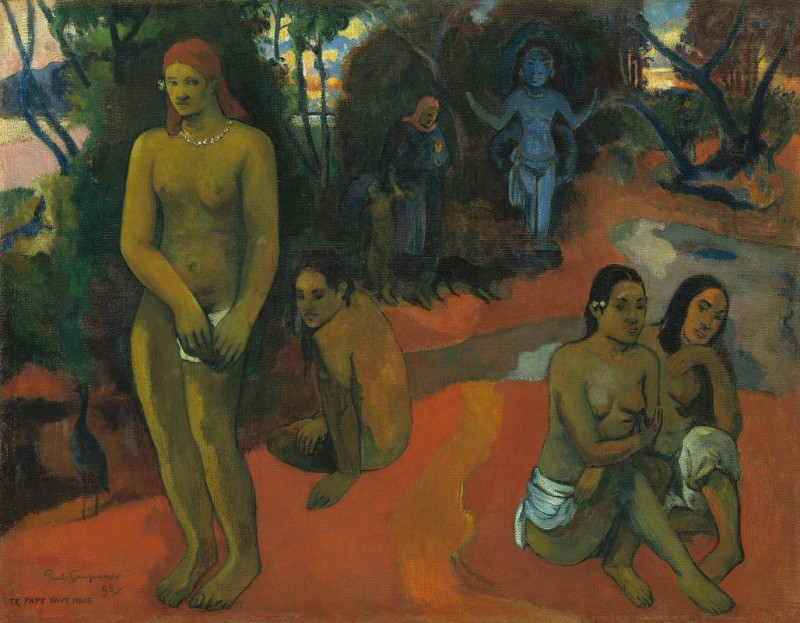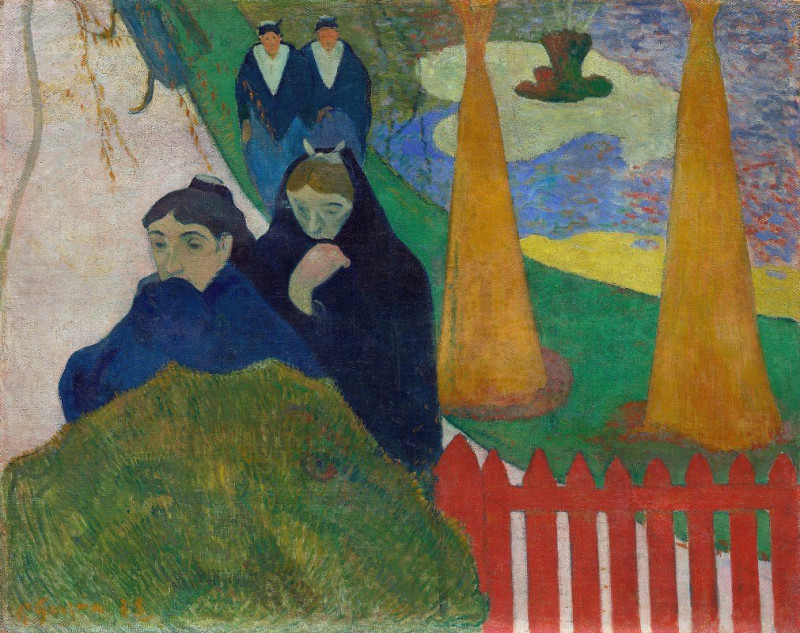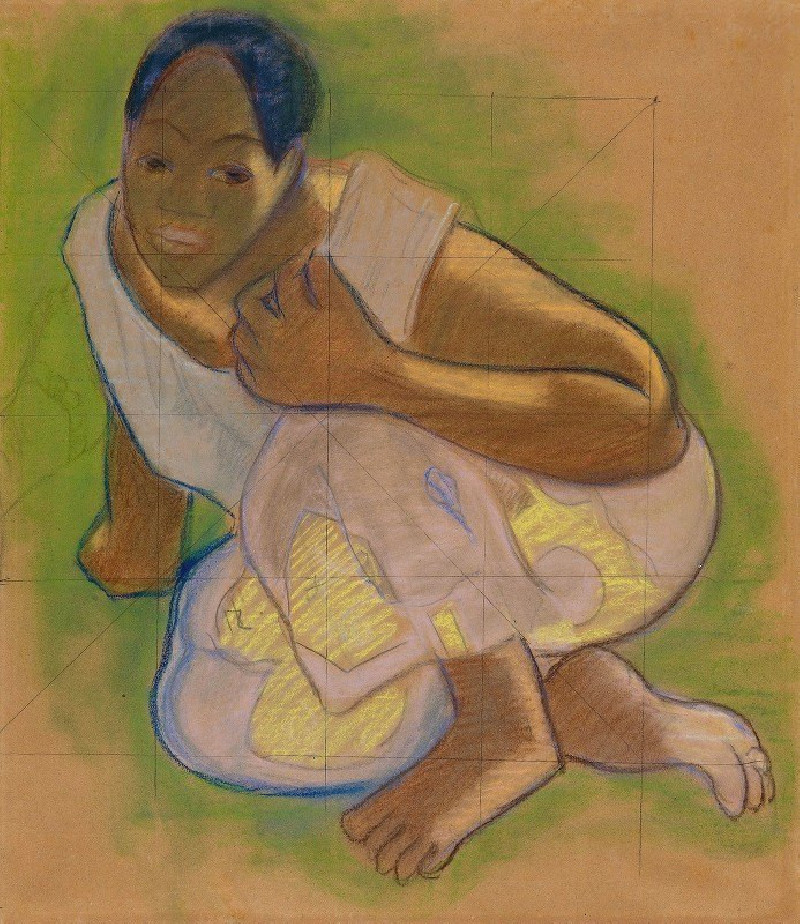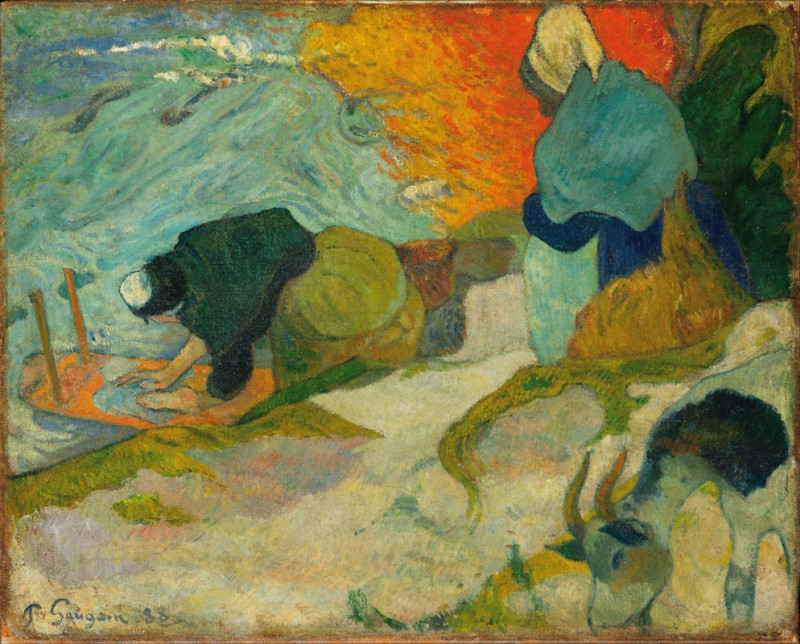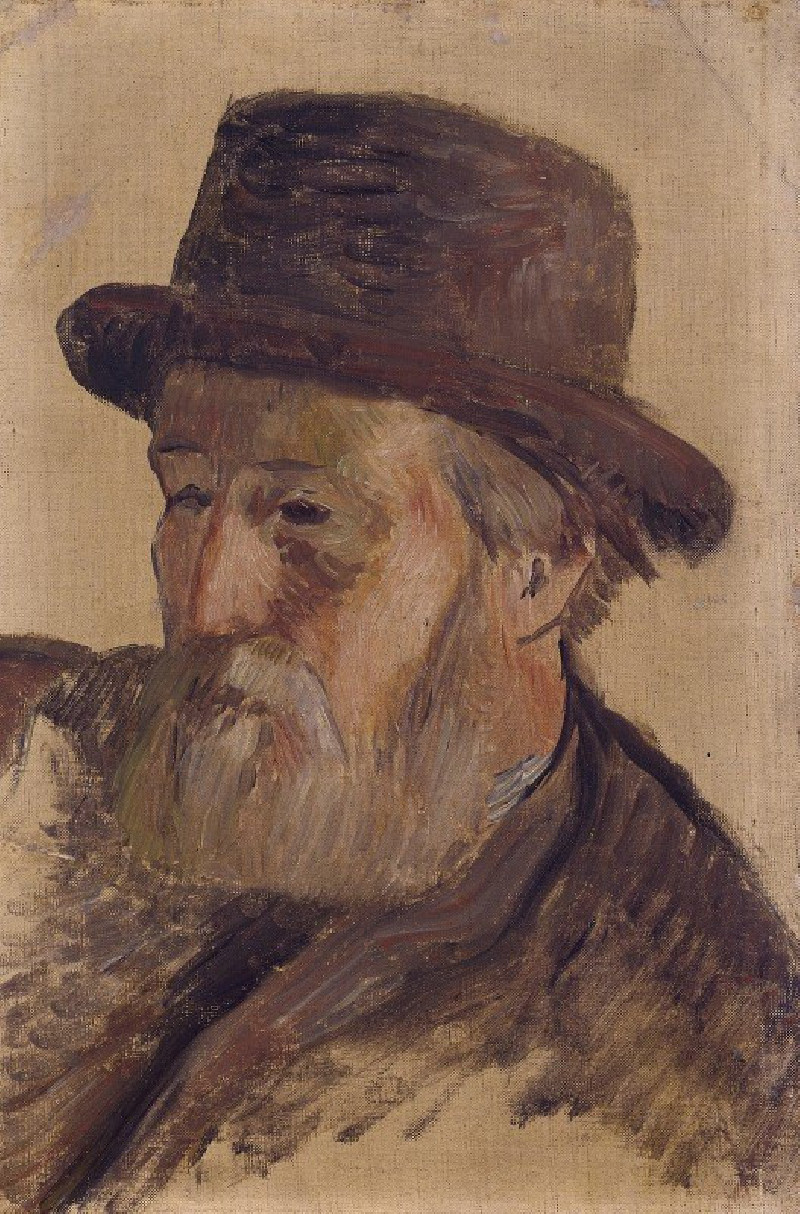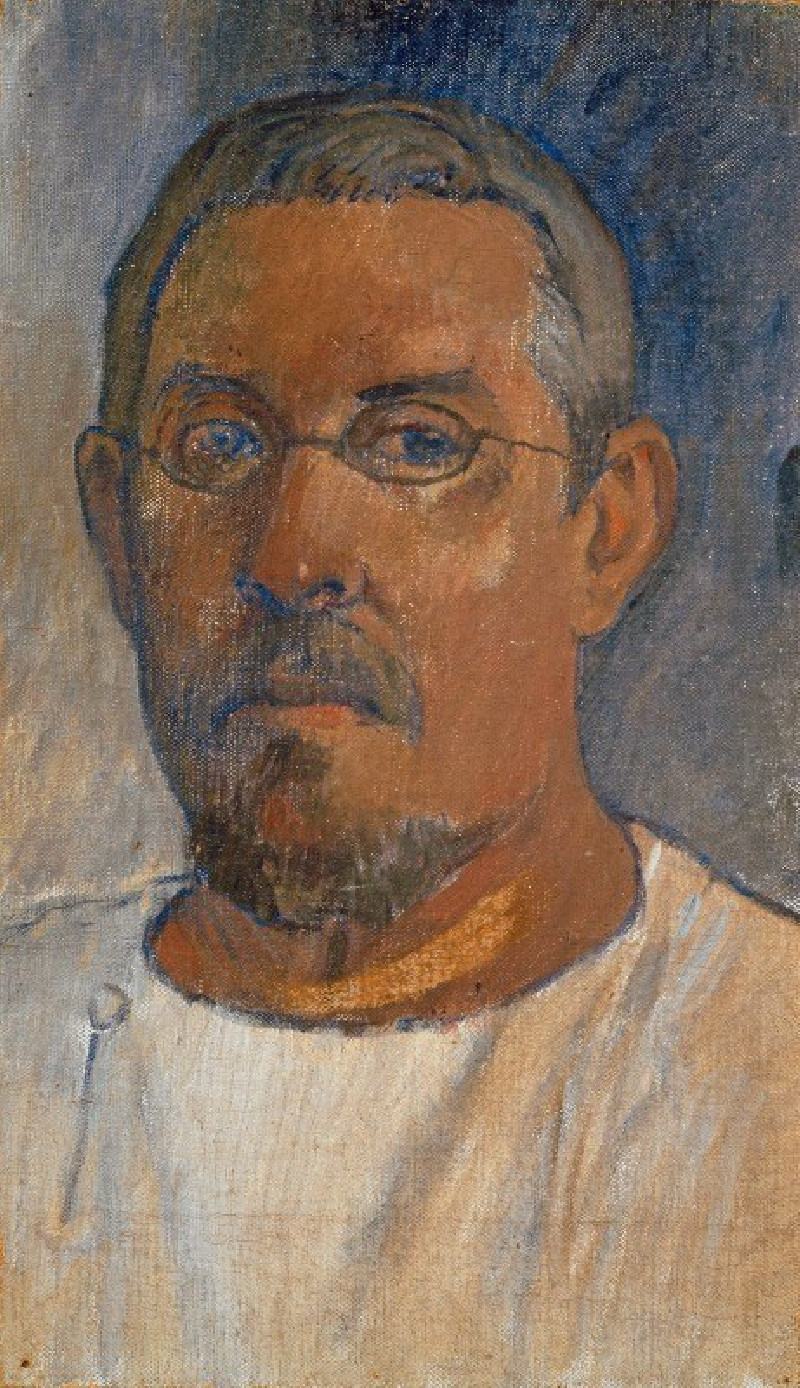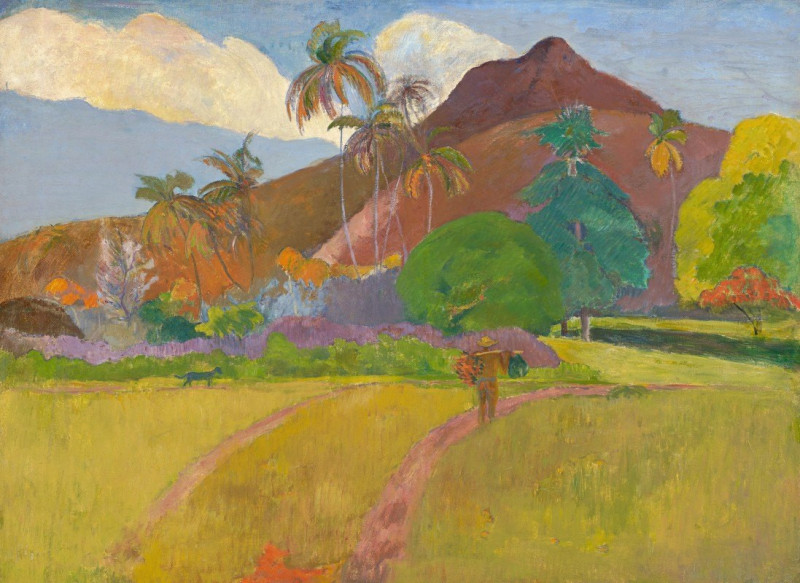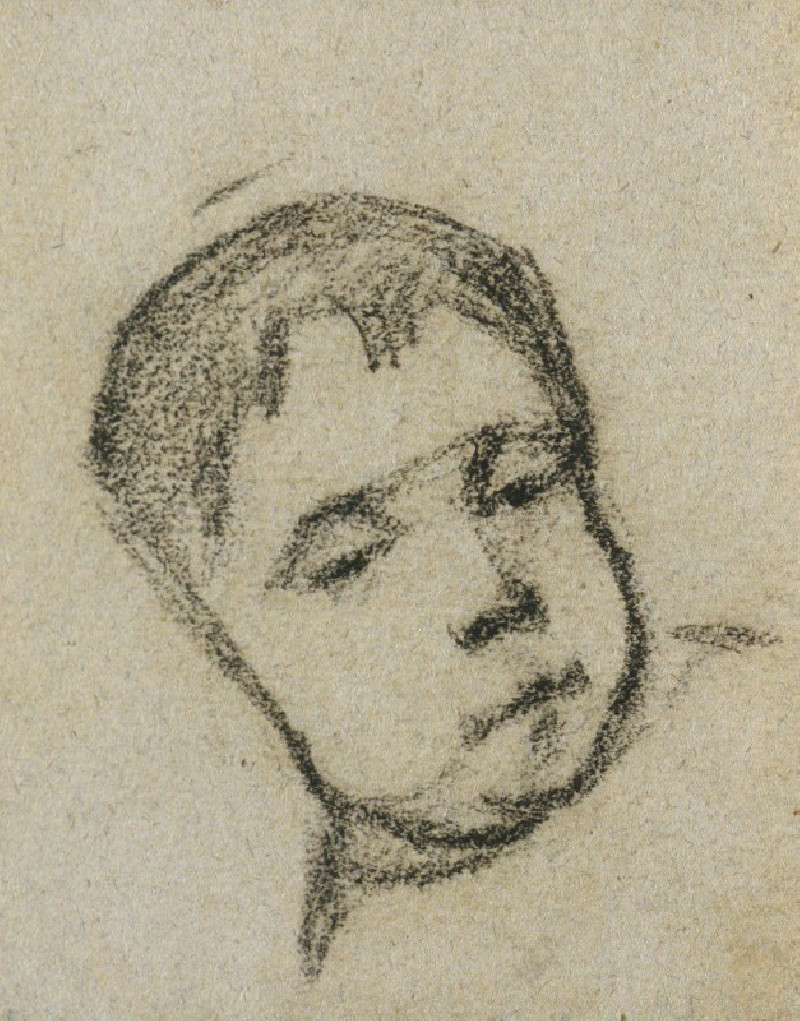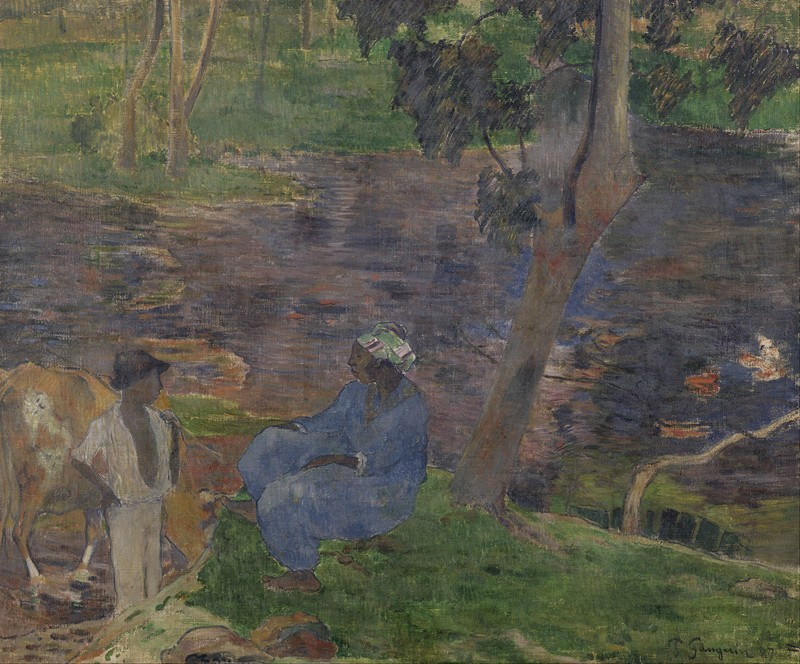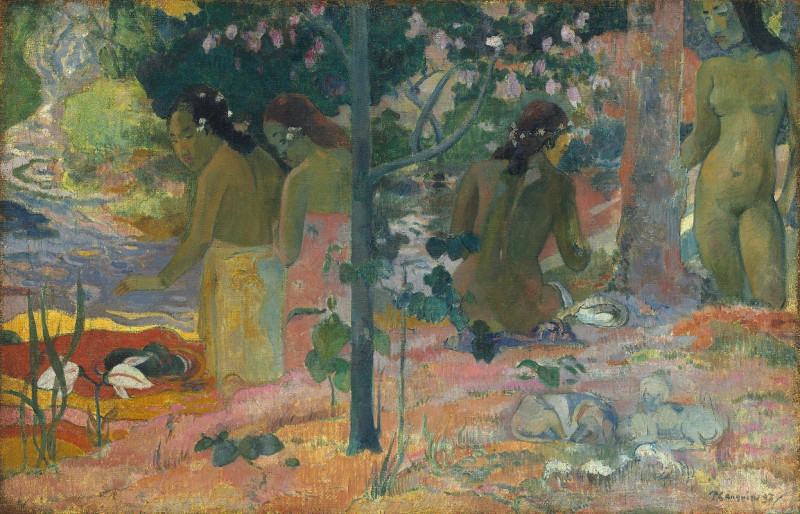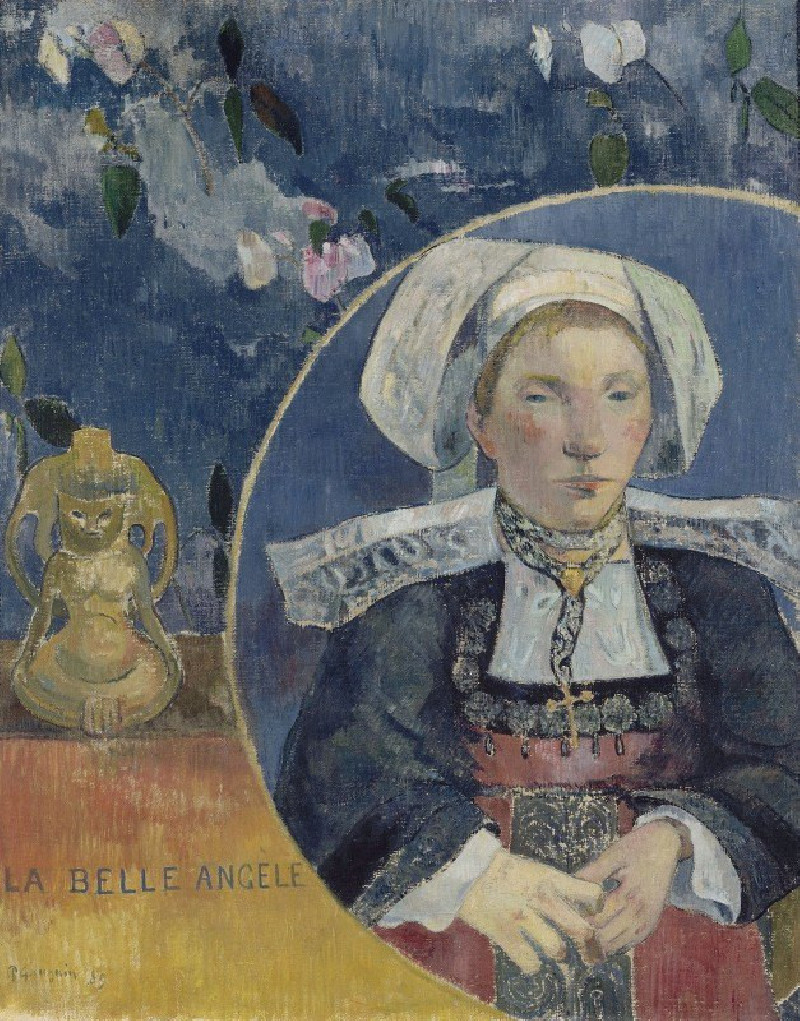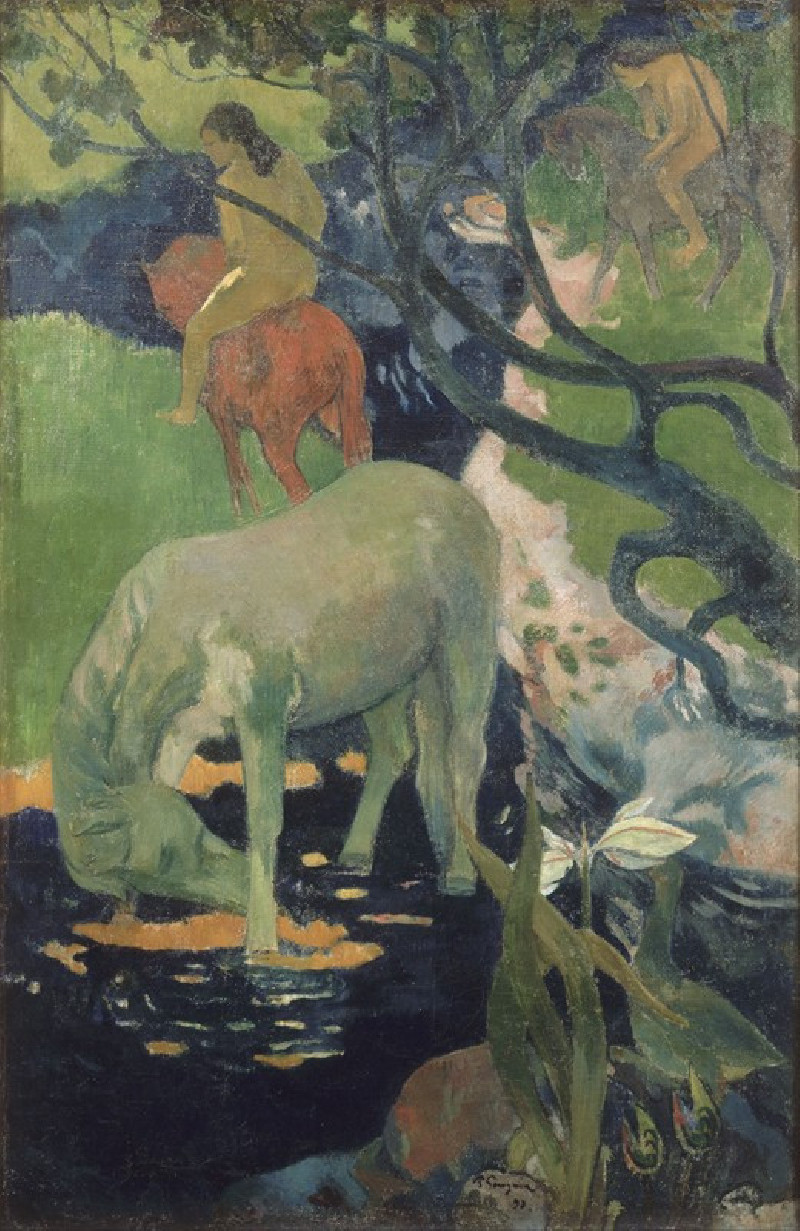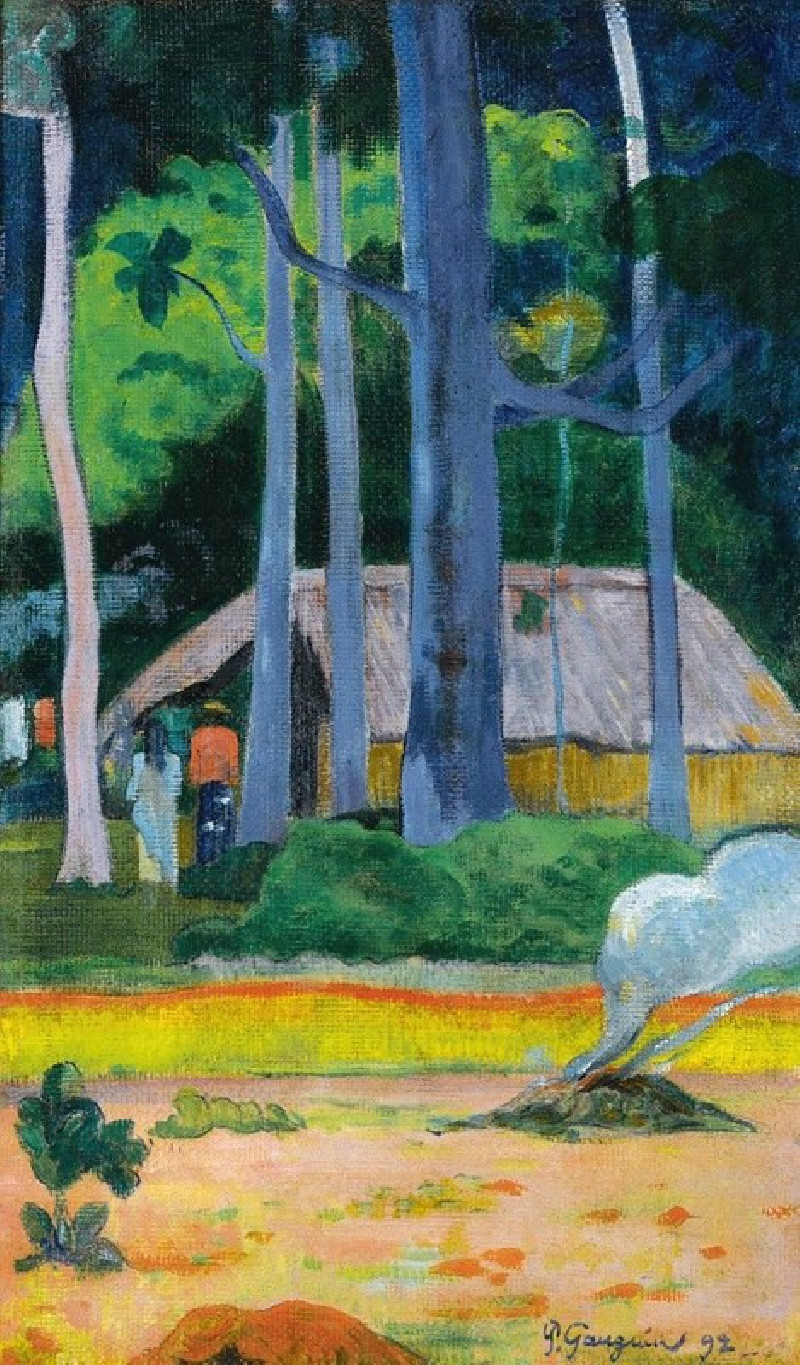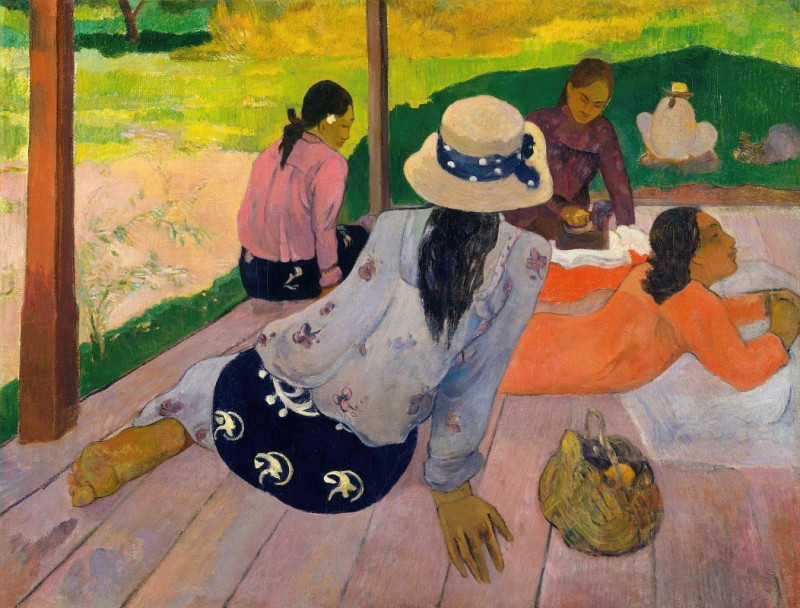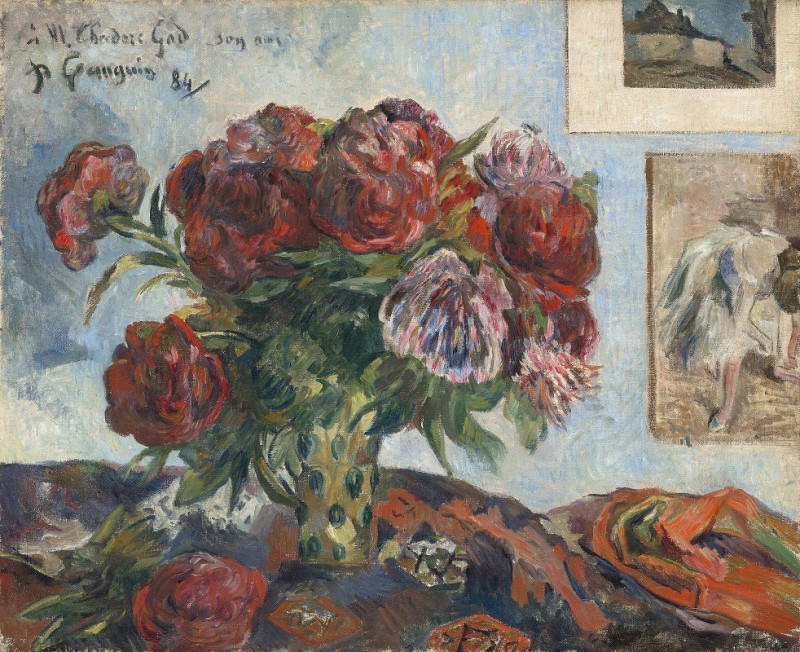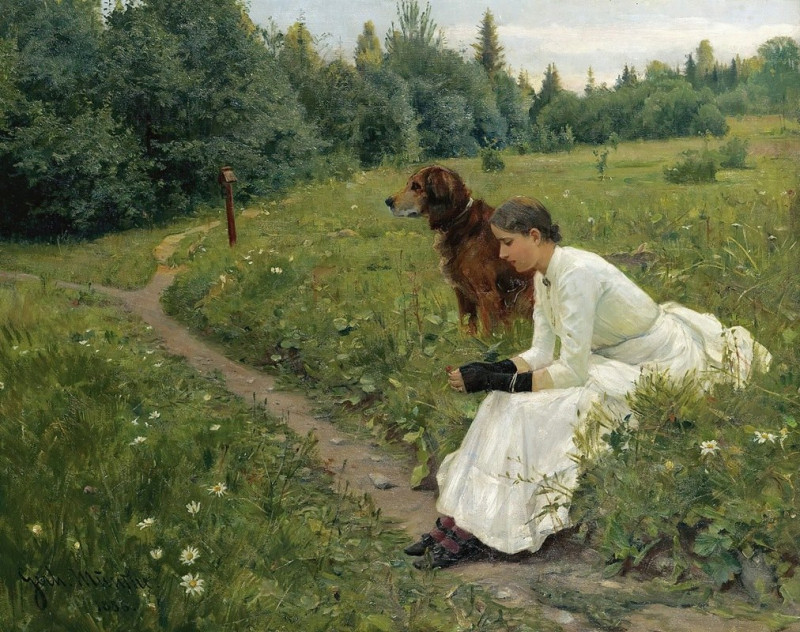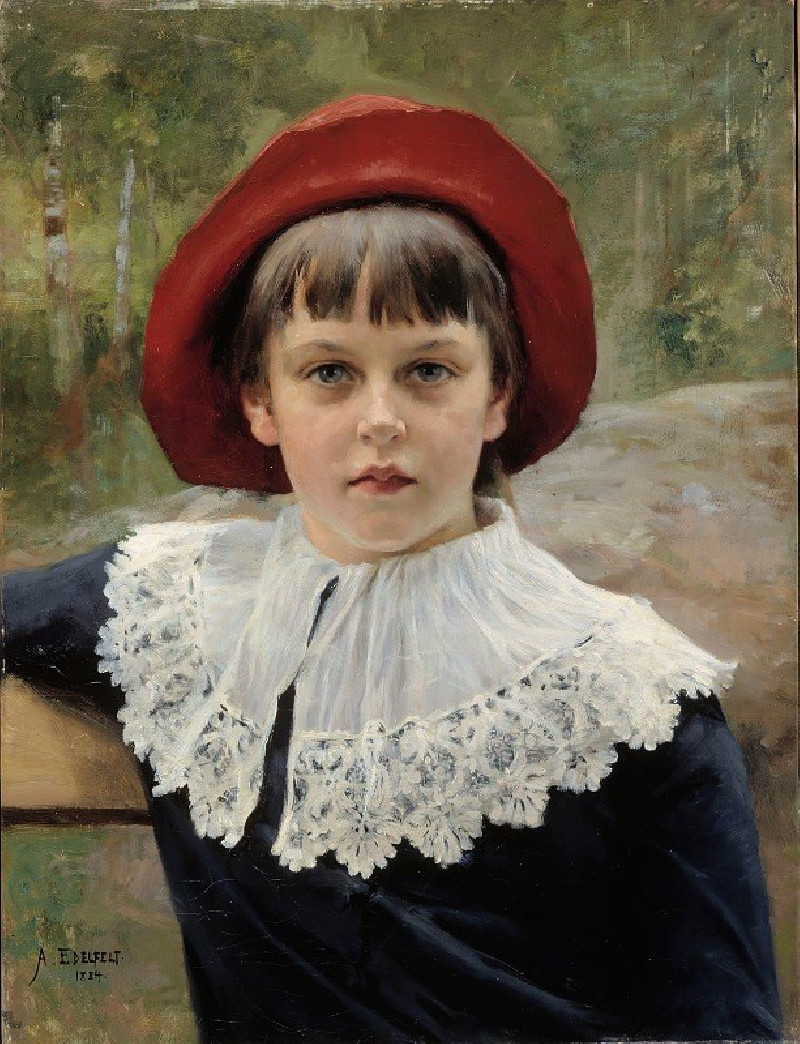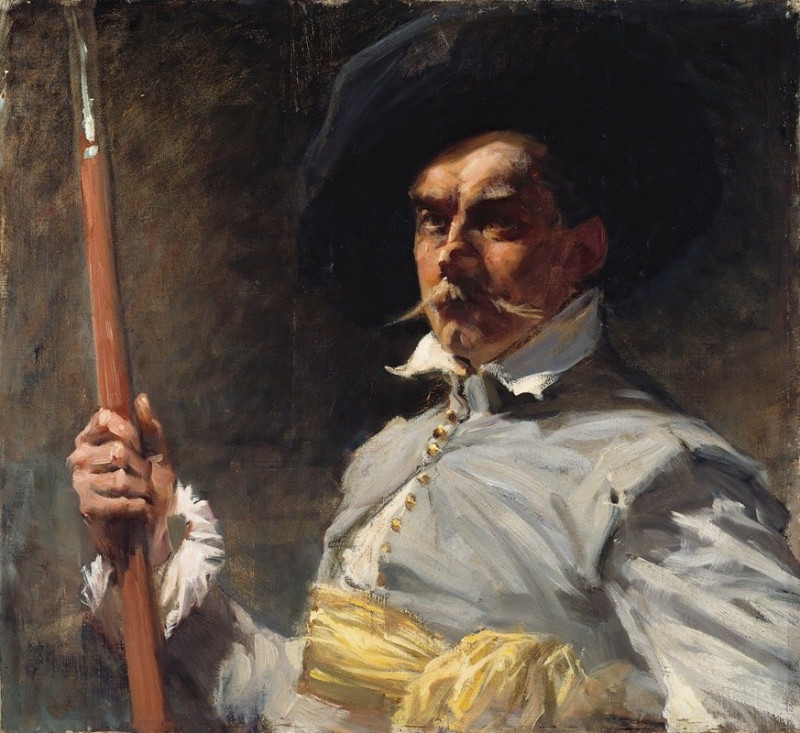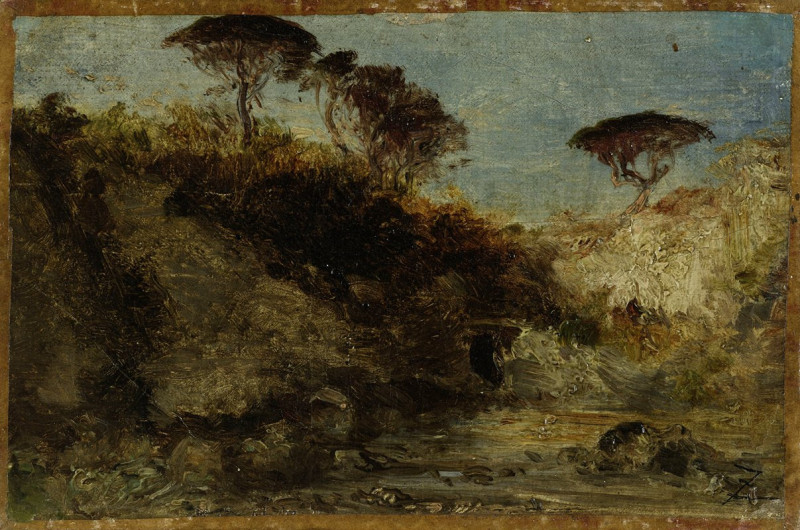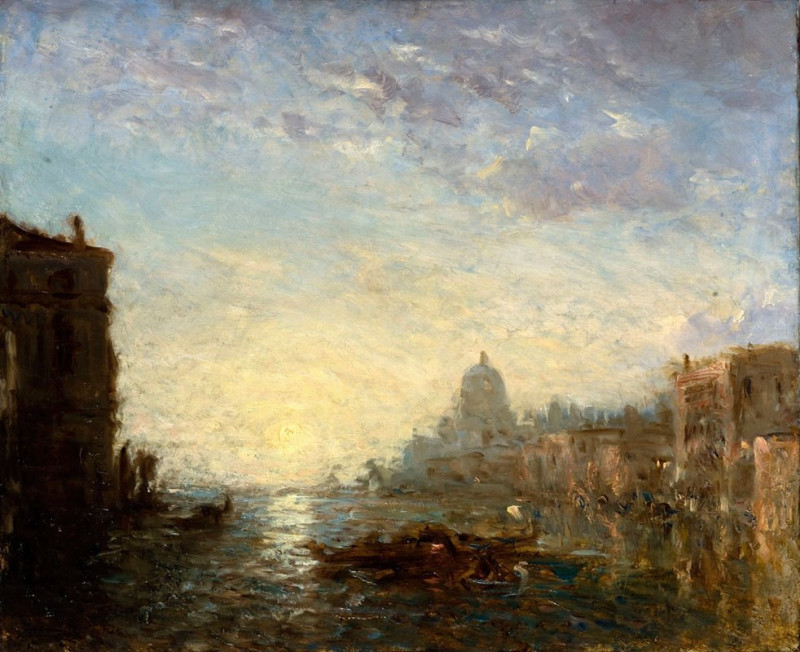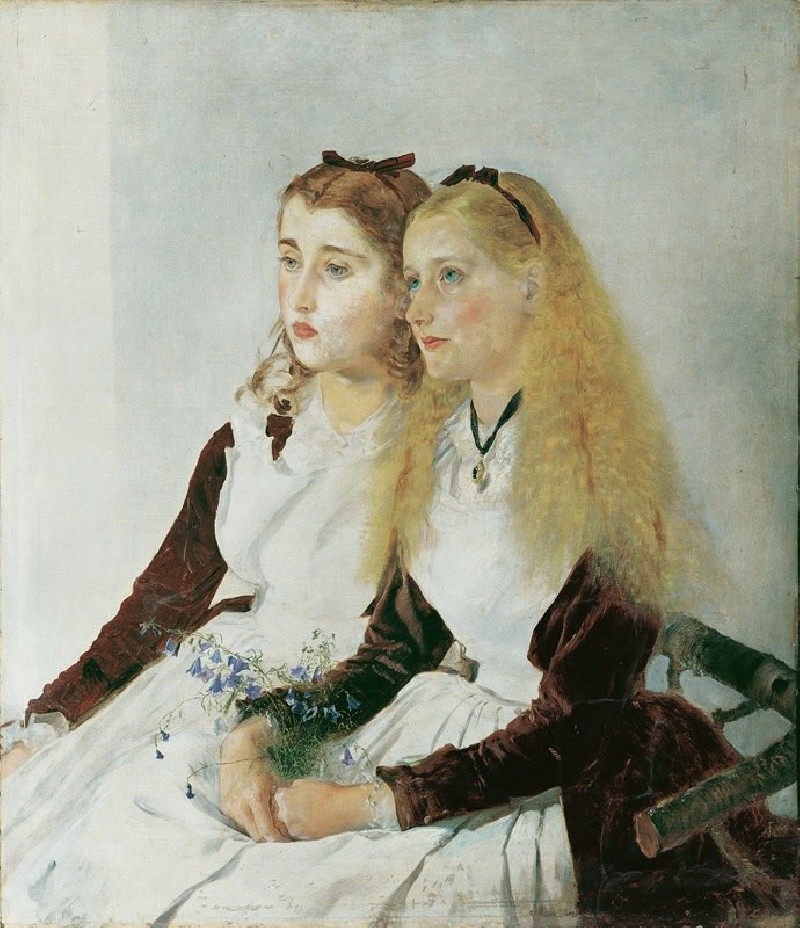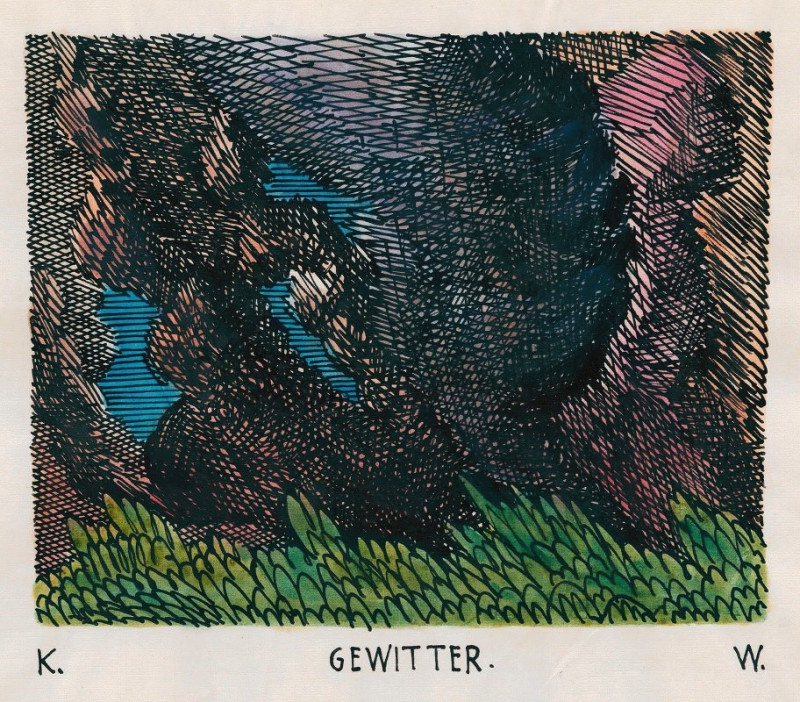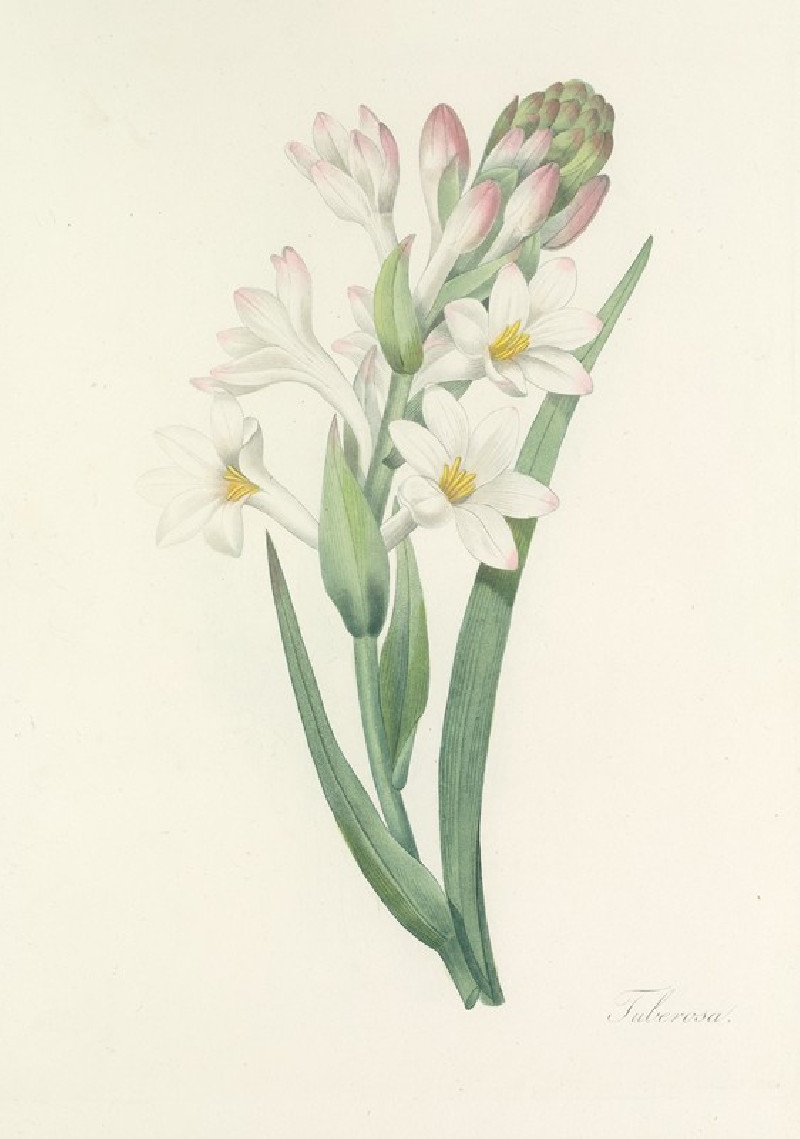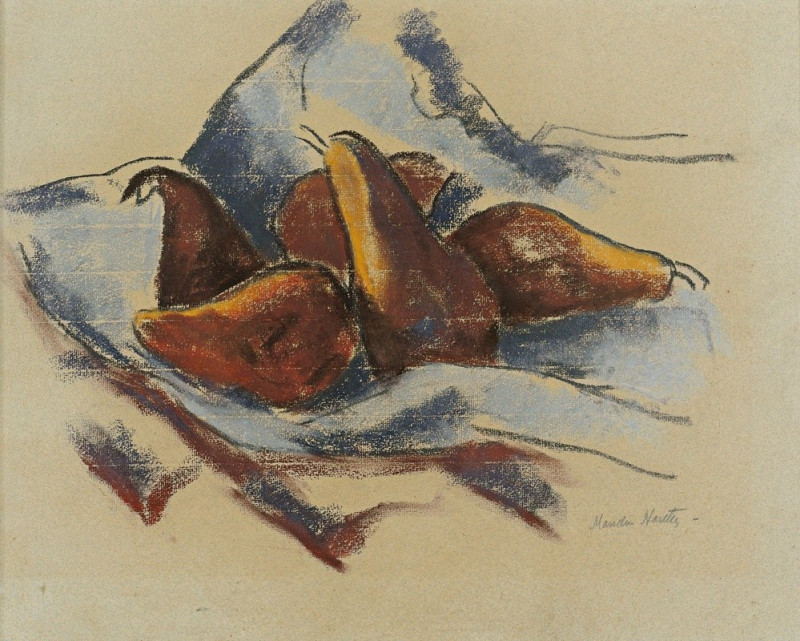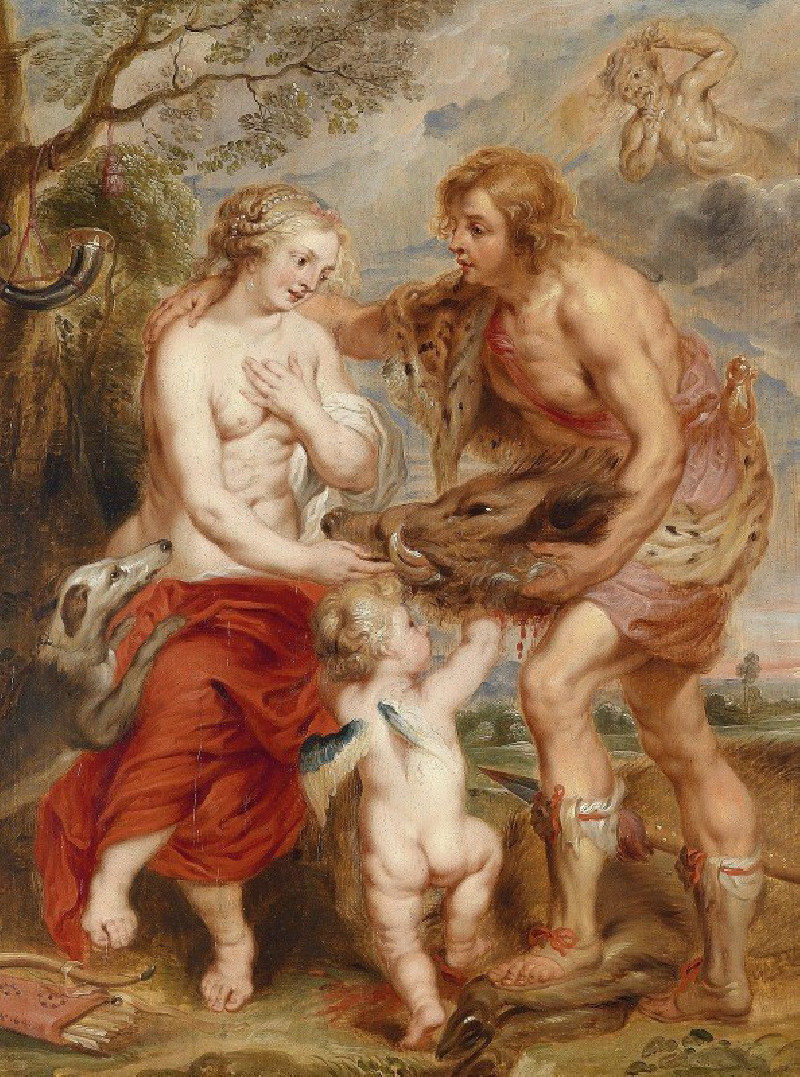Paysage de Te vaa (1896)
Technique: Giclée quality print
Recommended by our customers
More about this artwork
On our website this month, we spotlight the mesmerizing work of Paul Gauguin, "Paysage de Te vaa" (1896). This captivating landscape painting transports viewers to the serene and lush vistas of Tahiti, an island that deeply inspired Gauguin during his stays."Paysage de Te vaa" is drenched in a palette of deep blues and gentle greens that captures the multifaceted beauty of the Tahitian landscape. The scene is dominated by an imposing mountain that rises majestically in the backdrop, its peak obscured by swirling, ethereal clouds that seem to merge seamlessly with the sky. Below, the calm sea stretches out, its surface broken only by the gentle ripples and the silhouette of a traditional Polynesian boat, or 'va'a', gliding quietly along the water.In the foreground, lush greenery frames the view, hinting at the untamed nature of the island. Gauguin’s use of color and textured brushstrokes evokes a sense of tranquility and the profound wonder of the natural world. This painting not only highlights Gauguin’s bold use of color and form but also his deep connection to the landscapes of Tahiti, which continued to influence his work throughout his career.
Delivery
Returns
Eugène Henri Paul Gauguin was a French Post-Impressionist artist. Unappreciated until after his death, Gauguin is now recognized for his experimental use of color and Synthetist style that were distinct from Impressionism. Toward the end of his life, he spent ten years in French Polynesia. The paintings from this time depict people or landscapes from that region.

